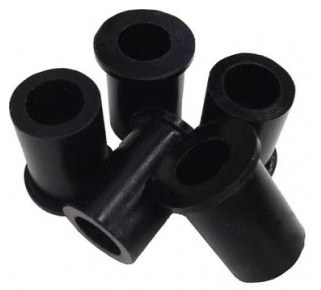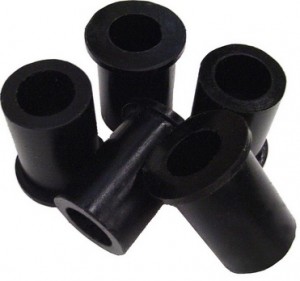Industrial plastics serve as an excellent bushing/bearing material in everything from needle bearings to large marine bushing applications. Since many industrial plastics are suitable for different bushing applications its best to know the advantages, and potential drawbacks, of each material. The following is not meant to be an extensive guide to selecting a bushing material, just a primer to the different options:
UHMW polyethylene:
UHMW-PE can serve as an excellent low-load bushing, 500-800 PSI is at the top of its limitations. UHMW has the benefit of being economical, self-lubricating and readily available. Customers tend to be very familiar with this particular plastic and trust it. Areas for concern with UHMW are its relative low-load, and high thermal expansion.
Nylon 6:
Cast nylon (nylon 6) is a widely used bushing material and can handle up to 4,000 PSI. Cast nylon is available in several grades including heat stabilized, Moly-filled and oil-filled. The primary area of concern with nylon is its moisture saturation: 4% in a water saturated environment. Impact and cold environments are also a concern for nylon. Nylon bushings can either be made with much more generous allowances in aqueous environments, or acetal may be a substitute.
Acetal:
Acetal is one of, if not, the best plastic to machine due to its hardness and ability to machine to tight tolerances. Acetal is often a good substitute for nylon in marine environments.
Industrial laminates:
Often just called “Micarta” or “phenolic” by customers, industrial laminates excel in high-load, low RPM applications. Certain industrial laminate bearings can handle in excess of 24,000 PSI. You do need to be aware that these bushings should be lubricated and that certain rotational speeds will not work. If you need to know the specifics, just ask.
Redco 750 and 750 XL
Polyurethane bushings are often an excellent choice. They handle abrasion, impact, and can be molded (perhaps with some machining to finish them). Polyurethane can handle up to 2,500 psi. Cold temperatures may be a concern, and tooling costs are often involved with urethane parts, but the end result are effective bushings that can be produced with low-lead times and in quantity.
For answers to your questions on our bushing or bearing material, contact us today.


